Recipe For KFC Coleslaw: The Secret Is Finally Revealed!
.jpg) KFC coleslaw is a classic side dish served at the popular fast-food chain. Made with a creamy buttermilk dressing and crisp shredded cabbage, it is a refreshing addition to any meal. This recipe will guide you through making your own delicious KFC coleslaw at home.KFC coleslaw is made with simple yet flavorful ingredients. The base of the coleslaw is shredded cabbage, with added carrots for sweetness and color. The dressing is a combination of buttermilk, mayonnaise, white vinegar, and sugar, creating a rich and tangy flavor.To make KFC coleslaw, start by shredding the cabbage and carrots into thin strips. Then, dice the onion into small pieces. Next, prepare the dressing by whisking together buttermilk, mayonnaise, white vinegar, sugar, salt, and pepper. Combine the dressing with the shredded vegetables and mix well. Let the coleslaw chill in the fridge before serving.Some tips for making the perfect KFC coleslaw include:
KFC coleslaw is a classic side dish served at the popular fast-food chain. Made with a creamy buttermilk dressing and crisp shredded cabbage, it is a refreshing addition to any meal. This recipe will guide you through making your own delicious KFC coleslaw at home.KFC coleslaw is made with simple yet flavorful ingredients. The base of the coleslaw is shredded cabbage, with added carrots for sweetness and color. The dressing is a combination of buttermilk, mayonnaise, white vinegar, and sugar, creating a rich and tangy flavor.To make KFC coleslaw, start by shredding the cabbage and carrots into thin strips. Then, dice the onion into small pieces. Next, prepare the dressing by whisking together buttermilk, mayonnaise, white vinegar, sugar, salt, and pepper. Combine the dressing with the shredded vegetables and mix well. Let the coleslaw chill in the fridge before serving.Some tips for making the perfect KFC coleslaw include:
- Using fresh ingredients
- Adjusting the dressing to your taste
- Allowing the coleslaw to chill before serving
For a healthier version, you can substitute the mayonnaise with Greek yogurt, use honey or maple syrup instead of sugar, and add fresh herbs for extra flavor. Now that you have the recipe for KFC coleslaw, you can enjoy this iconic side dish anytime at home. Whether it's for a summer barbecue or a quick weeknight dinner, this coleslaw is sure to be a hit with your family and friends.
Key Takeaways:
What Is KFC Coleslaw?
KFC coleslaw is a classic side dish that is renowned for its creamy and tangy flavor. It is a traditional recipe that features shredded cabbage and carrots, mixed with a dressing made of mayonnaise, buttermilk, vinegar, sugar, and various seasonings. The unique taste of KFC coleslaw sets it apart from other coleslaw recipes, making it a staple on the KFC menu and a favorite among many as a complement to their meals.So, if you're wondering what KFC coleslaw is, it's a delicious and refreshing side dish that adds a cool and crunchy element to any meal. The combination of crisp cabbage, sweet carrots, and creamy dressing is what makes KFC coleslaw so popular among fans of the fast-food chain.
What Ingredients Are Used to Make KFC Coleslaw?
KFC coleslaw is a beloved side dish that perfectly complements their famous fried chicken. But have you ever wondered what exactly goes into making this delicious and creamy slaw? In this section, we will take a closer look at the ingredients used to create KFC coleslaw. From the classic combination of cabbage and carrots to the secret ingredient that gives it that signature tangy flavor, we'll discover all the elements that make up this mouthwatering recipe. So let's dig in and uncover the secrets behind this popular side dish.
1. Cabbage
Cabbage is a crucial ingredient in KFC coleslaw, providing a satisfying crunch and a burst of freshness to the dish. Here is a simple step-by-step guide to incorporating cabbage into your coleslaw:
- Start by carefully removing any damaged or wilted outer leaves from the cabbage.
- Next, slice the cabbage in half and remove the tough core.
- Using a sharp knife or a mandoline, thinly shred the cabbage into fine pieces.
- For a quicker and more consistent result, consider using a food processor with a shredding attachment.
- Place the shredded cabbage into a large mixing bowl.
- If desired, you can sprinkle a pinch of salt over the cabbage and gently massage it for a minute to help tenderize the leaves and release some of the moisture.
- Once the cabbage is prepared, it can be combined with other coleslaw ingredients, such as carrots, onion, and a creamy dressing.
Pro tip: For a more visually appealing and flavorful coleslaw, try using a mix of purple and green cabbage varieties. This adds a touch of sweetness and a vibrant color to the dish.
2. Carrots
Carrots are a crucial component of KFC coleslaw, providing both flavor and texture to the dish. They are typically shredded or grated and mixed with cabbage and onion to create a vibrant and nutritious slaw. Not only are carrots delicious, but they also offer numerous health benefits. They are a great source of beta-carotene, which the body converts into vitamin A, essential for maintaining good vision and a strong immune system. Additionally, carrots are high in fiber, aiding in digestion and promoting a sense of fullness. By incorporating carrots into your diet, you can support your overall health and well-being.Fun fact: Did you know that carrots were originally purple and yellow? It wasn't until the 17th century that orange carrots, as we know them today, were selectively cultivated.
3. Onion
When making KFC coleslaw, one of the key ingredients is onion. Here is a step-by-step guide on how to incorporate onion into your coleslaw:
- Dice the onion into small pieces.
- In a large mixing bowl, combine the diced onion with the shredded cabbage and carrots.
- Next, prepare the dressing by mixing buttermilk, mayonnaise, white vinegar, sugar, salt, and pepper.
- Pour the dressing over the cabbage, carrots, and onion mixture.
- Use a spatula or spoon to thoroughly mix the ingredients together.
- Cover the bowl with plastic wrap and let the coleslaw chill in the refrigerator for at least an hour to allow the flavors to meld together.
- After chilling, give the coleslaw a final stir before serving.
By following these steps, you can ensure that the onion is evenly distributed throughout the coleslaw, adding a delicious crunch and flavor to the dish. Enjoy your homemade KFC coleslaw!
4. Buttermilk
Buttermilk is a crucial ingredient in the making of KFC coleslaw, adding a creamy tanginess to the dressing and enhancing the dish's overall flavor. This fermented dairy product is slightly acidic and thicker than regular milk, created by introducing bacterial cultures to milk, causing it to ferment and develop its distinct taste. In KFC coleslaw, buttermilk not only provides flavor but also acts as a tenderizer for the cabbage, carrots, and onions in the salad. The acidity in buttermilk helps to break down the fibers in the vegetables, resulting in a more tender and flavorful coleslaw. For a healthier version of KFC coleslaw, low-fat or fat-free buttermilk can be used instead of regular buttermilk. This reduces the dish's overall calorie and fat content while still maintaining its tangy flavor. Alternatively, a mixture of Greek yogurt and milk can also be used to achieve a similar tangy taste as buttermilk.
5. Mayonnaise
Mayonnaise is a key ingredient in KFC coleslaw, contributing to its creamy and tangy flavor. Here are the steps to making the perfect KFC coleslaw using mayonnaise:
- Shred the cabbage and carrots.
- Dice the onion.
- Make the dressing by combining mayonnaise, buttermilk, white vinegar, sugar, salt, and pepper.
- Mix the cabbage, carrots, and onion with the mayonnaise-based dressing until well-coated.
- Chill the coleslaw in the refrigerator for at least 2 hours before serving.
To make a healthier version of KFC coleslaw, you can make a few substitutions:
- Use Greek yogurt instead of mayonnaise for a lighter option.
- Substitute sugar with honey or maple syrup for a natural sweetener.
- Add fresh herbs like dill or parsley for extra flavor.
I once made KFC coleslaw for a family gathering using Greek yogurt instead of mayonnaise. Everyone loved the lighter and healthier twist, and some even said they couldn't tell the difference! It's a great way to enjoy the classic taste of KFC coleslaw with a healthier twist.
6. White Vinegar
White vinegar is a crucial ingredient when making KFC coleslaw. It provides a tangy and acidic flavor to the dressing, balancing out the creaminess of the mayonnaise. Additionally, white vinegar acts as a preservative, helping to prolong the shelf life of the coleslaw. When preparing KFC coleslaw, it is important to use white vinegar specifically, as other types of vinegar can alter the taste and acidity level of the dressing. To incorporate white vinegar into the coleslaw, simply mix it with the other dressing ingredients such as mayonnaise, buttermilk, sugar, salt, and pepper. Adjust the amount of vinegar to your taste, keeping in mind that too much can overpower the other flavors in the coleslaw. Overall, white vinegar is essential in creating the signature taste of KFC coleslaw, adding a refreshing and zesty flavor profile.
7. Sugar
KFC coleslaw is a popular side dish known for its creamy and slightly sweet flavor. One of the main contributors to this sweetness is sugar, which helps balance the tanginess of the vinegar and mayonnaise in the dressing. The sugar is typically added to the dressing mixture, along with other ingredients such as buttermilk, mayonnaise, white vinegar, and salt and pepper. For a healthier version of KFC coleslaw, you can reduce the amount of sugar used or opt for alternative sweeteners like honey or maple syrup. You can also experiment with adding fresh herbs like dill or parsley to enhance the flavor without solely relying on sugar. Interestingly, coleslaw was originally made without sugar and consisted of a simple combination of shredded cabbage and other vegetables dressed with vinegar. However, over time, variations of coleslaw emerged and the addition of sugar became more common to create a sweeter taste. Today, KFC coleslaw remains a beloved classic side dish enjoyed by many.
8. Salt and Pepper
Salt and pepper are crucial components in KFC coleslaw, adding delicious flavor and enhancing the overall taste of the dish. Follow these simple steps to incorporate salt and pepper into your KFC coleslaw:
- Begin by shredding the cabbage and carrots.
- Dice the onion.
- In a separate bowl, create the dressing by combining buttermilk, mayonnaise, white vinegar, sugar, salt, and pepper.
- Add the shredded cabbage, carrots, and diced onion to the dressing.
- Mix everything together until well combined.
- Refrigerate the coleslaw for at least an hour before serving.
When it comes to using salt and pepper in your coleslaw, it's important to taste and adjust the seasoning according to your preference. Start with a small amount of salt and pepper, and add more if desired. Remember, it's always easier to add more seasoning than to remove excess salt and pepper. Enjoy your homemade KFC coleslaw with the perfect balance of flavors!
How to Make KFC Coleslaw?
If you're a fan of KFC's famous coleslaw, you may be wondering how to recreate it at home. Luckily, it's not as complicated as it may seem. In this section, we will go through the step-by-step process of making KFC coleslaw. From shredding the cabbage and carrots to mixing in the delicious dressing, we'll guide you through each stage so you can enjoy this iconic side dish in the comfort of your kitchen. So let's get started and learn how to make KFC coleslaw!
1. Shred the Cabbage and Carrots
To shred the cabbage and carrots for KFC coleslaw, follow these steps:
- Begin by removing the outer leaves of the cabbage and discarding them.
- Cut the cabbage in half and remove the core.
- Using a sharp knife or shredder, thinly slice the cabbage into long, thin strips.
- Place the shredded cabbage in a large bowl.
- Next, peel the carrots and trim off the ends.
- Using a grater or shredder, grate the carrots into fine shreds.
- Add the shredded carrots to the bowl with the cabbage.
- Toss the cabbage and carrots together until they are evenly mixed.
Shredding the cabbage and carrots is a crucial step in creating KFC coleslaw, as it gives the dish its signature texture and appearance. Be sure to wash the cabbage and carrots thoroughly before shredding to remove any dirt or debris, ensuring a clean and fresh coleslaw.
2. Dice the Onion
To dice the onion for KFC coleslaw, follow these steps:
- Peel the onion and remove the dry outer layer.
- Cut the onion in half from top to bottom.
- Place the cut side of the onion on the cutting board, and make vertical cuts, leaving the root end intact.
- Make horizontal cuts across the onion, again leaving the root end intact.
- Finally, dice the onion by making downward cuts perpendicular to the cutting board.
Dicing onions is a common technique used in various culinary traditions to enhance the flavor and texture of dishes. Onions have been cultivated and used in cooking for thousands of years, believed to have originated in Asia and spread throughout the world by explorers and traders. Today, diced onions are a popular ingredient in dishes such as salads, soups, and stir-fries. The fine dice of onions in KFC coleslaw add a mild onion flavor and a satisfying crunch, perfectly complementing the other ingredients.
3. Make the Dressing
To create the dressing for KFC coleslaw, simply follow these steps:
- In a bowl, combine mayonnaise and buttermilk.
- Add white vinegar, sugar, salt, and pepper.
- Whisk the ingredients together until well combined and the sugar has dissolved.
- Taste the dressing and adjust the seasonings to your liking.
By following these steps, you can make a creamy and tangy dressing that perfectly complements the cabbage, carrots, and onion in KFC coleslaw. Be sure to whisk the dressing thoroughly to ensure all the ingredients are evenly incorporated. Adjusting the seasonings allows you to customize the flavor to your preference. Enjoy the dressing with the shredded vegetables for a delicious and refreshing coleslaw.
4. Mix the Cabbage, Carrots, and Onion with the Dressing
To mix the cabbage, carrots, and onion with the dressing for KFC coleslaw, follow these steps:
- Shred the cabbage and carrots into thin strips.
- Dice the onion into small pieces.
- In a separate bowl, combine the buttermilk, mayonnaise, white vinegar, sugar, salt, and pepper to make the dressing.
- Add the cabbage, carrots, and onion to the bowl with the dressing.
- Gently toss the mixture until the vegetables are evenly coated with the dressing.
To serve, chill the coleslaw in the refrigerator for at least an hour before enjoying it. This allows the flavors to meld together.I once attended a backyard barbecue where the host served homemade KFC coleslaw. As soon as I took my first bite, I was blown away by the perfect balance of creaminess and tanginess. I couldn't resist going for seconds and even asked for the recipe. Turns out, the secret was mixing the cabbage, carrots, and onion with the dressing just before serving, ensuring each bite was full of flavor. Ever since that day, I've been using this method to make my own coleslaw, and it never disappoints!
5. Chill and Serve
To properly chill and serve KFC coleslaw, follow these simple steps:
- After mixing the cabbage, carrots, and onion with the dressing, cover the bowl with plastic wrap or a tight-fitting lid.
- Place the coleslaw in the refrigerator to chill for at least two hours. This will allow the flavors to meld together and the coleslaw to become crisp and refreshing.
- Before serving, give the coleslaw a good stir to redistribute the dressing and ensure that all the vegetables are coated.
- Serve the chilled KFC coleslaw as a side dish with your favorite fried chicken or barbecue.
Fun Fact: Did you know that KFC coleslaw has been a staple on their menu since the 1950s? It has become iconic for its creamy, tangy, and slightly sweet flavor, making it a beloved accompaniment to KFC's famous fried chicken.
Tips for Making the Perfect KFC Coleslaw
Are you a fan of KFC's famous coleslaw? Why not try making it at home for a delicious addition to your next meal? While the recipe may seem simple, there are a few key tips to keep in mind to achieve the perfect balance of flavors and textures. In this section, we'll share our top tips for making the best KFC coleslaw, including using fresh ingredients, adjusting the dressing to your taste, and letting the coleslaw chill before serving. Get ready to impress your taste buds with this homemade version of the beloved KFC side dish.
1. Use Fresh Ingredients
Using fresh ingredients is crucial when making KFC coleslaw. The use of fresh ingredients ensures the best taste and texture for this classic dish. Here are some steps to follow when using fresh ingredients:
- Choose fresh cabbage: Look for a firm cabbage head with bright green outer leaves and no signs of wilting or discoloration.
- Use fresh carrots: Select firm carrots with a vibrant orange color. Avoid using soft or blemished carrots.
- Pick fresh onions: Opt for firm onions with a strong aroma. Avoid using soft or moldy onions.
- Check the freshness of buttermilk: Make sure the buttermilk is within its expiration date and has not gone sour.
- Use fresh mayonnaise: Check the expiration date on the mayonnaise jar and make sure it hasn't expired.
- Verify the freshness of white vinegar: Ensure that the white vinegar is not expired and has a clear color and strong aroma.
- Use fresh sugar: Make sure the sugar is free from lumps and has not absorbed any moisture.
- Season with fresh salt and pepper: Add freshly ground salt and pepper to taste for the perfect flavor.
True story: One time, I made KFC coleslaw using old cabbage, and the result was a lackluster dish with a strange aftertaste. Since then, I always make sure to use fresh ingredients to recreate the authentic KFC coleslaw experience.
2. Adjust the Dressing to Your Taste
To customize the dressing of KFC coleslaw to your liking, follow these steps:
- Taste the dressing before mixing it with the cabbage, carrots, and onion.
- If you prefer a tangier flavor, add a little more white vinegar.
- For a sweeter taste, increase the amount of sugar in the dressing.
- To make the dressing creamier, add more mayonnaise or buttermilk.
- If you prefer a lighter dressing, reduce the amount of mayonnaise or buttermilk.
- For a more seasoned coleslaw, adjust the salt and pepper to your liking.
- Remember to make small adjustments at a time and taste as you go to ensure the dressing meets your desired flavor profile.
By personalizing the dressing, you can create a KFC coleslaw that perfectly suits your taste preferences.
3. Let the Coleslaw Chill Before Serving
To achieve the best flavor and texture, it is crucial to allow the coleslaw to chill before serving. Follow these steps to ensure the perfect coleslaw experience:
- Prepare the coleslaw according to the recipe.
- Once mixed, cover the coleslaw tightly with plastic wrap or place it in an airtight container.
- Refrigerate the coleslaw for at least 1 hour, but preferably overnight.
- During this chilling time, the flavors will meld together, and the coleslaw will become more crisp and refreshing.
- Before serving, give the coleslaw a good stir to evenly coat it with the dressing.
By allowing the coleslaw to chill, you will enhance its taste and texture. The cold temperature will also make it more refreshing, perfect for serving alongside grilled meats or sandwiches. So, be patient and let the coleslaw chill before enjoying its deliciousness. Remember, the key to a great coleslaw is letting it rest and develop its flavors, so don't rush the chilling process.
How to Make a Healthier Version of KFC Coleslaw?
KFC's coleslaw is a beloved side dish, but it can be high in calories and unhealthy ingredients. Luckily, you can recreate this classic recipe at home with a few simple substitutions to make a healthier version. In this section, we will cover three ways to make your own KFC coleslaw with a healthier twist. Say goodbye to mayo and sugar, and hello to Greek yogurt and honey for a guilt-free and delicious coleslaw. Plus, we'll share a tip on how to add extra flavor with fresh herbs. Let's get cooking!
1. Use Greek Yogurt Instead of Mayonnaise
Greek yogurt can be a healthier alternative to mayonnaise when making KFC coleslaw. Here is a simple step-by-step guide to using Greek yogurt in place of mayonnaise:
- Shred the cabbage and carrots.
- Dice the onion.
- Make the dressing by combining Greek yogurt, white vinegar, sugar, salt, and pepper.
- Mix the cabbage, carrots, and onion with the dressing.
- Chill the coleslaw in the refrigerator before serving.
Pro-tip: For a healthier version of KFC coleslaw, swap out mayonnaise for Greek yogurt. Not only does Greek yogurt add a creamy texture and tangy flavor, but it also reduces the fat content. Adjust the amount of Greek yogurt to your desired consistency and taste. Enjoy a healthier version of KFC coleslaw by using Greek yogurt instead of mayonnaise.
2. Substitute Sugar with Honey or Maple Syrup
When making a healthier version of KFC coleslaw, you can substitute sugar with honey or maple syrup. This helps reduce the refined sugar content while adding natural sweetness. Here is a step-by-step guide to making this substitution:
- Start by preparing all the other ingredients for the coleslaw, such as cabbage, carrots, and onion.
- In a separate bowl, combine the dressing ingredients, including mayonnaise, buttermilk, white vinegar, salt, and pepper.
- Instead of using sugar, opt for honey or maple syrup as a natural sweetener.
- Adjust the amount of honey or maple syrup to your taste preferences. Begin with a smaller amount and gradually add more if desired.
- Whisk the dressing together until well combined and the sweetener is fully incorporated.
- Proceed with the rest of the coleslaw recipe by mixing the shredded cabbage, carrots, and diced onion with the dressing.
- Chill the coleslaw in the refrigerator for at least a couple of hours to allow the flavors to meld.
- Once chilled, serve the healthier version of KFC coleslaw and enjoy!
3. Add Fresh Herbs for Extra Flavor
Adding fresh herbs to KFC coleslaw not only elevates its flavor but also adds a burst of freshness and aroma. Here are some steps to follow when incorporating fresh herbs into your coleslaw:
- Prepare the coleslaw base by shredding the cabbage and carrots.
- Dice the onion and mix it with the shredded vegetables.
- Create the dressing by combining buttermilk, mayonnaise, white vinegar, sugar, salt, and pepper.
- Add your choice of fresh herbs, such as parsley, dill, or cilantro, to the dressing. Be sure to finely chop the herbs before adding them.
- Combine the dressing with the shredded vegetables and herbs until everything is well-coated.
- Refrigerate the coleslaw for at least an hour to allow the flavors to meld.
- Serve the coleslaw as a refreshing side dish or as a topping for sandwiches.
Adding fresh herbs to KFC coleslaw not only enhances its taste but also adds a burst of freshness and aroma. Experiment with different herbs to find your preferred combination. Coleslaw has been enjoyed for centuries, with its origins dating back to ancient Rome. However, the modern version of coleslaw, as we know it today, gained popularity in the 18th century. The addition of fresh herbs to coleslaw is a modern twist that brings an extra layer of flavor to this classic dish.
Frequently Asked Questions
What is the KFC coleslaw recipe?
The KFC coleslaw recipe is a copycat recipe for the coleslaw served at the popular fast food chain, Kentucky Fried Chicken (KFC). It is a sweet, tangy, and creamy coleslaw that is best enjoyed during the spring and summer months.
What makes this coleslaw recipe stand out from other imitations?
The secret is in the dressing, which is made with a unique combination of ingredients such as grated onion, full-fat mayonnaise, and buttermilk. This gives the coleslaw its signature flavor that is similar to the one served at KFC.
What are some helpful tips for making this coleslaw recipe?
To make the coleslaw more convenient, you can use pre-packaged bags of coleslaw mix from the market. Grating the onion is also important for the recipe, as it adds a unique flavor. The coleslaw needs to be chilled for the flavors to fully develop, and it is best served cold rather than at room temperature.
What is the recommended serving size for this coleslaw?
The original recipe states that it serves 10 people, but the author suggests serving smaller portions as the coleslaw is best enjoyed in small portions. Additionally, the coleslaw is a wet dish, so it is recommended to serve it with a slotted spoon and discard any excess liquid.
Can I make this coleslaw ahead of time?
Yes, this coleslaw can be made ahead of time. In fact, it tastes even better the day after it is made. You can prepare it a day before your event and keep it chilled until you are ready to serve it.
Are there any other recommended dishes from the author?
Yes, the author suggests trying other salad recipes such as dill pickle pasta salad, carrot salad, and tuna macaroni salad. For those who love KFC, the author also recommends trying their KFC Famous Bowl Casserole, which is a popular dish among fans. 🖨 PRINT FULL RECIPE:
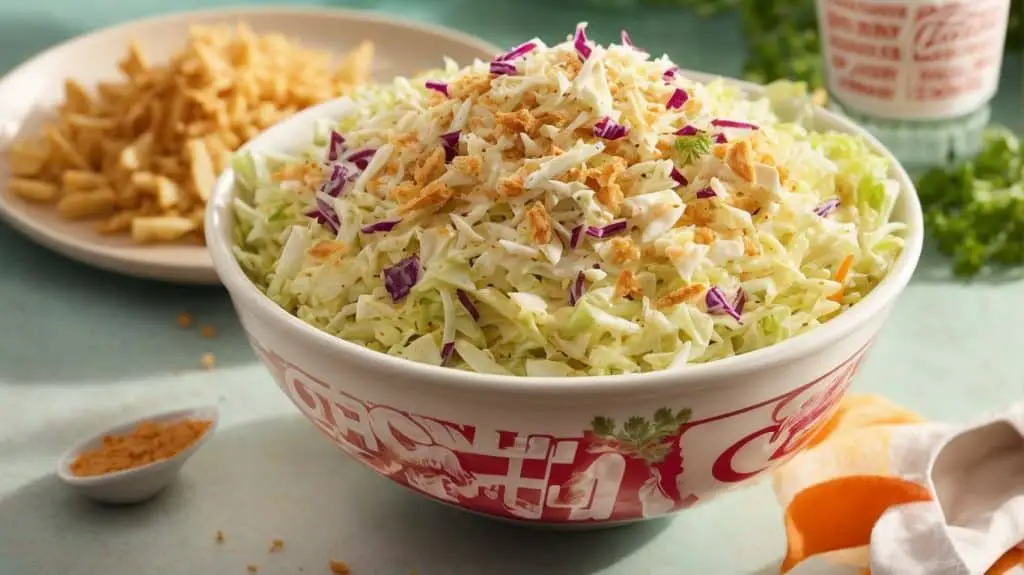
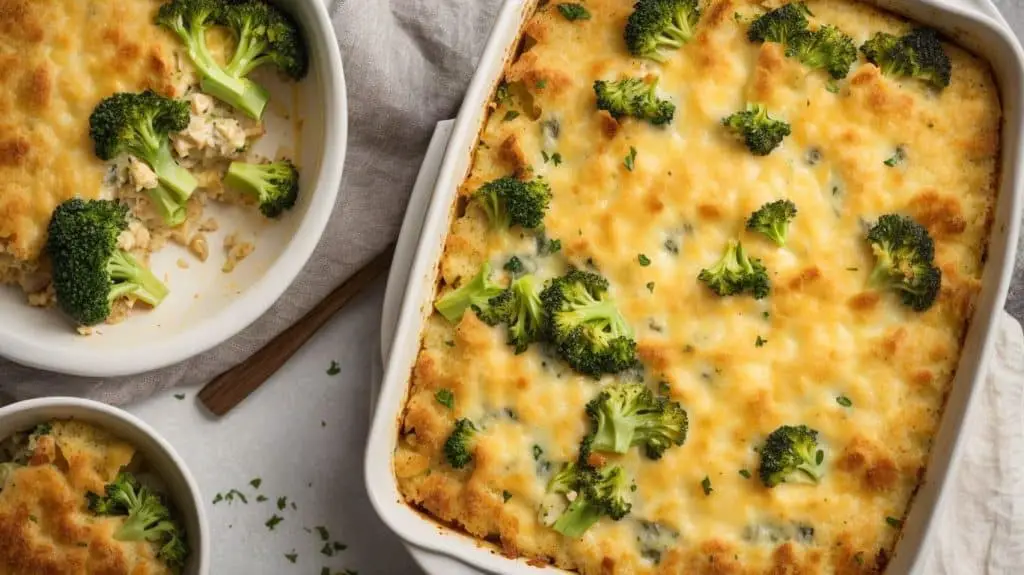
.jpg)
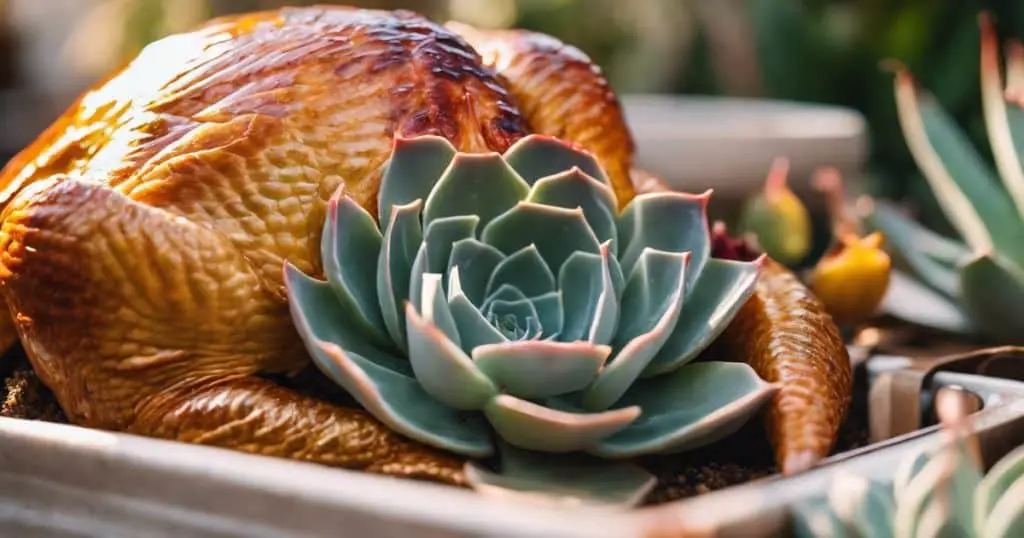

.jpg)
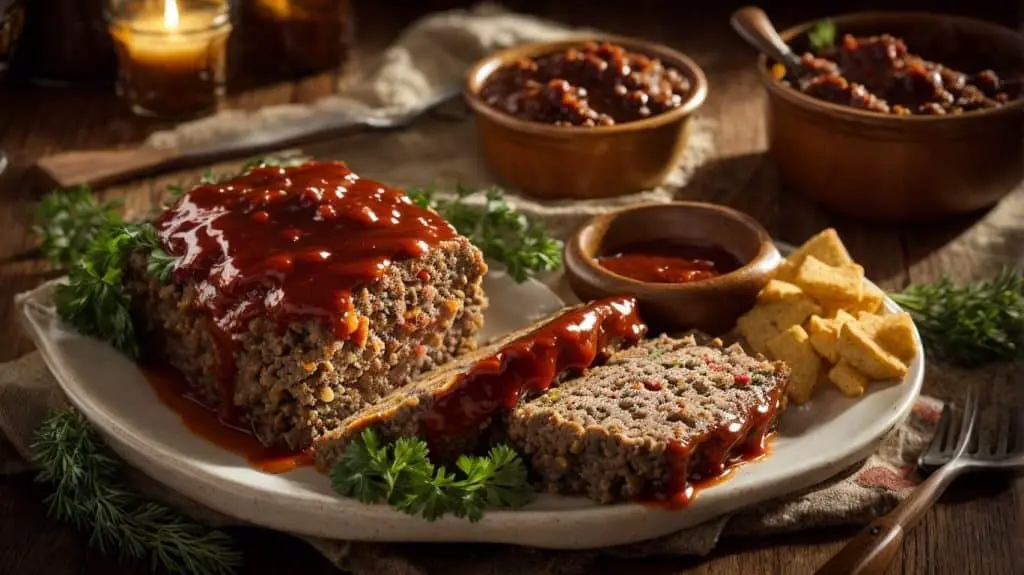
.jpg)

.jpg)
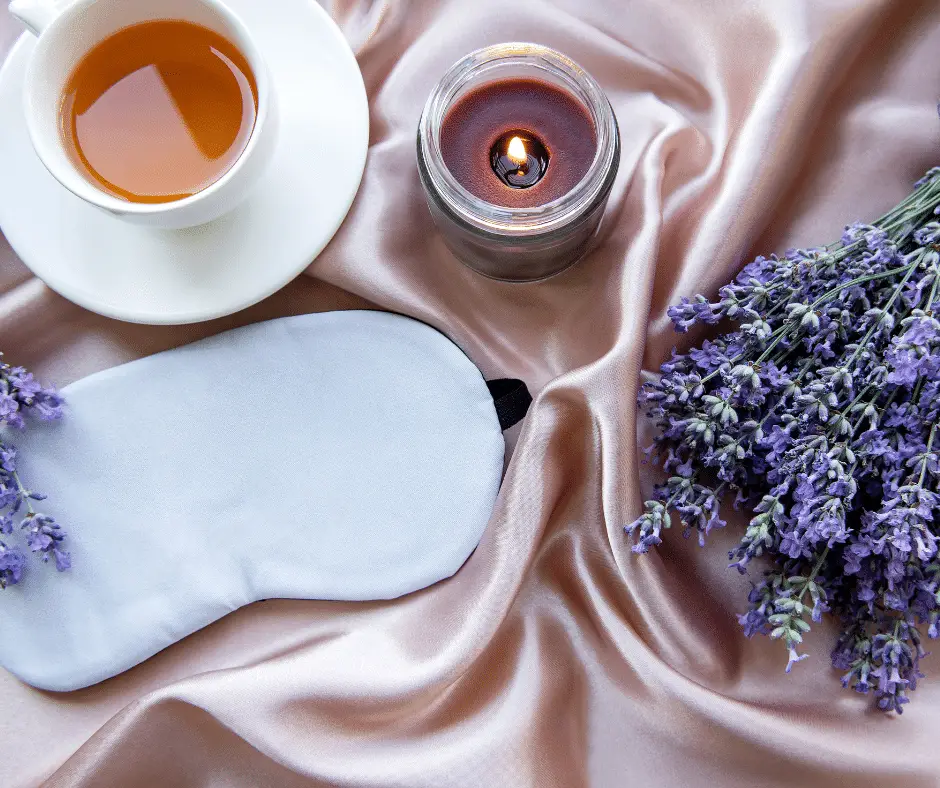
.jpg)
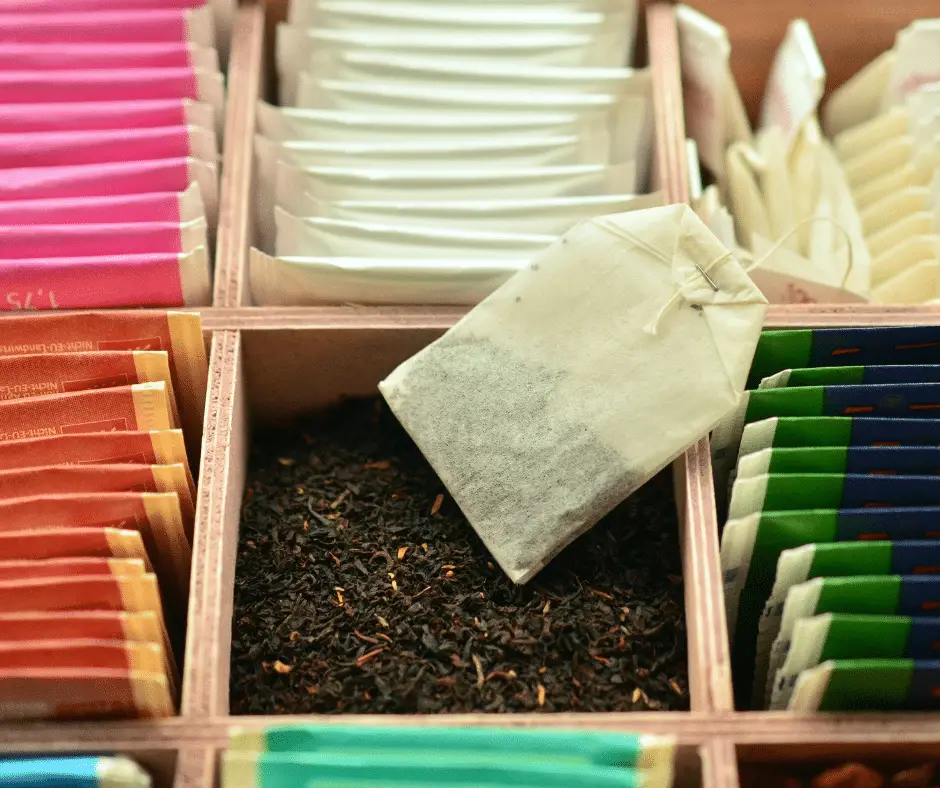
.jpg)
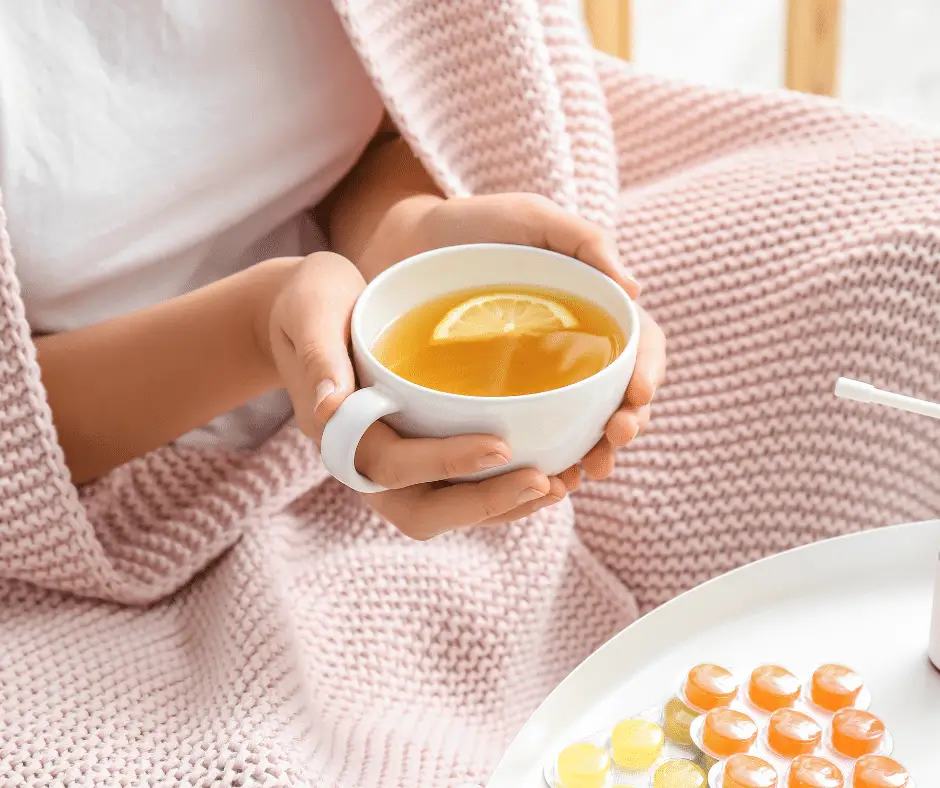
.jpg)